We are currently living in really tense social and political times.
 You can’t turn on the news or check your Internet homepage without sensing the depth of the issues that our country is experiencing. Whether it is returning to the workplace amidst COVID-19 rules, political protests, religious non-tolerance, or negative nightly news events – we’re experiencing a wide berth of dramatic events. And each of us has an opinion, a response, a way that we individually see these events and cope with this discord.
You can’t turn on the news or check your Internet homepage without sensing the depth of the issues that our country is experiencing. Whether it is returning to the workplace amidst COVID-19 rules, political protests, religious non-tolerance, or negative nightly news events – we’re experiencing a wide berth of dramatic events. And each of us has an opinion, a response, a way that we individually see these events and cope with this discord.
However we cope, we need to do our best to keep it out of the workplace, because when we allow the national scene to externally influence our internal emotions, then our emotions, in fact, can impact our safety and the well-being of others.
Whenever we are distracted by emotions, the risk of an injury or incident goes up, we become less able to concentrate and our minds get (emotionally) preoccupied. Our emotions can be influenced from a host of negatively-impacting ways; in turn, we can be hair-triggered to respond in negative ways. Today, we are especially challenged.
Below is a list of things that add to one’s emotional trigger points and what we can do when emotional overload pushes tempers to flare beyond the threshold level in our workplaces.
When tempers flare, adrenaline flows – it cranks up your heartbeat and breathing rate and primes your body for a fight response. This is NOT GOOD in our Workplaces! When tempers and emotions flare, regardless of the impetus, then the focus on safety takes a back seat. Emotion takes over. That is when you and your coworkers are exposed to higher risk and become most vulnerable to the unexpected.
So what just set you/him/her off?
- Someone hell-bent on bringing the national scene/election/politics into the workplace, and you vehemently disagree with their view? (Workplaces should be neutral places).
- Someone unable to keep their personal views on national, regional, or local events to themselves…to which you disagree?
- Someone unable to contain negative views about another’s race, gender, ethnicity, etc.? (Even when it is well known that what you think about a person/group of persons doesn’t matter when you come through the workplace door – if you’re going to collect a paycheck, you have to find ways to constructively work together with “all” people, regardless of your personal feelings. We’re all in this together, whether we like it or not.)
- Something else? Something that has become habitual? Like… bullying, intimidation, harassment or someone purposely pushing your buttons, again? And now they’ve crossed the line!
- You woke up angry and carried that into the workplace? Maybe you were stressed out before you came through the workplace door and you’ve taken it out on your mates.
- You’re tired? Maybe you’re tired of people taking shortcuts in the workplace and endangering others; maybe you hate that immature horseplay that may be happening, and that your supervisor seems powerless to address it.
- You’re an old-timer and could care less about the poor example you’re setting? (Don’t think people don’t see this.) Maybe you’re impulsive or maybe you just don’t give a darn. Maybe, because of the way you/he/she is behaving, that you/he/she has now not only lost the respect of coworkers, but the unexpected safety lapse is fully lurking around you; someone can get hurt…it is in the law of probabilities.
- Maybe you have just had a long, hot day and you are bone-weary?
Are you about to lose your temper (for whatever reason)? Cool it!
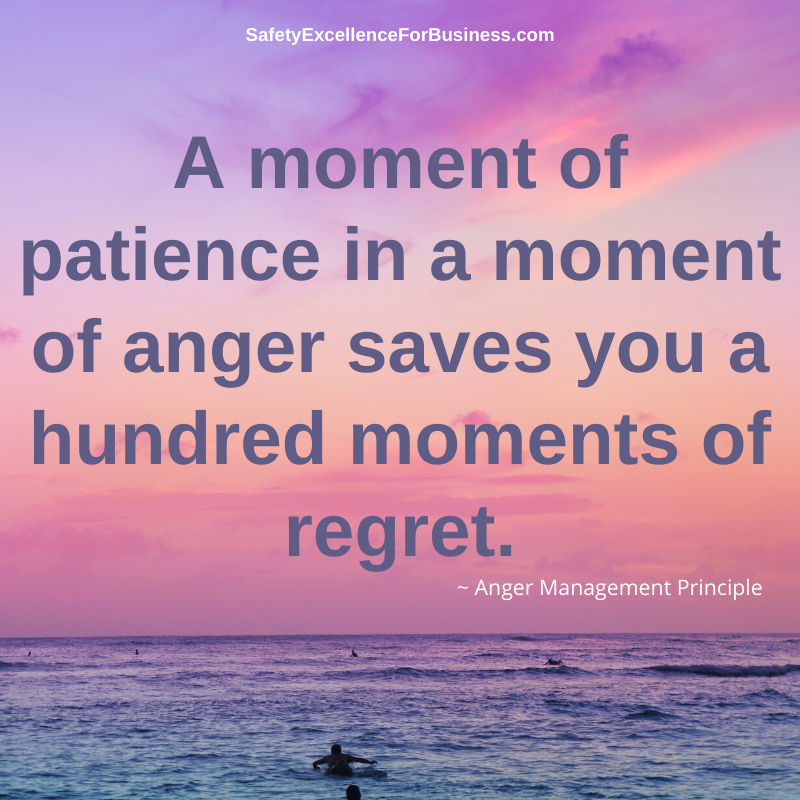 It doesn’t have to be that way! Take a timeout!
It doesn’t have to be that way! Take a timeout!
- Cool Off: Take a walk around the building or around the block.
- Take Two: Two minutes and think it through. Try to remove your emotion from this situation.
- Ask to have a private talk with your supervisor about your concerns: Make sure he/she fully grasps the situation and why what is emotionally happening is impacting safety and the workplace environment. Talk it through.
- Recognize that the actions of all of us have an influence on the safety-mindedness of other workers, particularly newcomers.
- If cornered, avoid responding to the aggressiveness of another: Don’t escalate the situation. (Walk away…it’s okay).
- Learn some work-group de-escalation processes, like our Stop-It Process – where one group code-word can quickly cool the ardor and bring harmony back.
Tame Your Temper: Because anger can be powerful, managing it is sometimes challenging. It takes plenty of self-awareness and self-control to manage angry feelings. It is hard, but you’ve got it in you!
Self-awareness is the ability to notice what you’re feeling, thinking, and why. Little kids aren’t very aware of what they feel – they just act it out in their behavior. That’s why you see them having tantrums when they’re mad. Adults (like workers in our workplaces) have the mental ability to be self-aware. If you’re still throwing tantrums, it is time you got some help or leave the workplace. When you get angry, take a moment to notice what you’re feeling and thinking.
Self-control is all about thinking before you act. It puts some precious seconds or minutes between feeling a strong emotion and taking an action you’ll regret.
Together, self-awareness and self-control allow you to have more choice about how to act when you’re feeling an intense emotion like anger.
The Safety Bottom Line: Our workplaces have to be as free as possible from the external emotional factors of the outside world. We’ve got enough to worry about internally – within our workplace walls.
Anytime tempers flare (as a result of any impetus – national, regional, political, or internal frictions) or when aggressive, bullying, intimidating behavior is not appropriately addressed, the risk of incidents increase. Hostile workplace and workplace violence potential increases, as does the potential liability for employers who have a duty to employees to provide a safe work environment, free of abuse and harassment.
Emotion-based discord is a health and safety issue. Supervisors need to be vigilant, “clued-in” and able to address such heated times with calm and genuine concern. Emotions can occur inside or outside the workplace and can range from simple disagreements that escalate to temper tantrum level, to threats and verbal abuse, to physical violence. (All no-no’s in the workplace!)
Thousands of people are exposed to workplace tensions each year…as well as the macro-level national concerns.
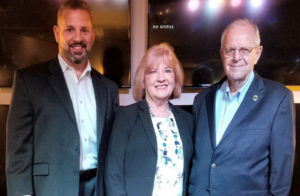 This begins with the leaders deciding to create a culture where it is okay and encouraged that people genuinely talk together, listen, help each other, look out for each other and learn together. This is a culture that helps people to be the best they can be and for the organization to get a lot more profitable. It all begins with all of us treating each other with respect.
This begins with the leaders deciding to create a culture where it is okay and encouraged that people genuinely talk together, listen, help each other, look out for each other and learn together. This is a culture that helps people to be the best they can be and for the organization to get a lot more profitable. It all begins with all of us treating each other with respect.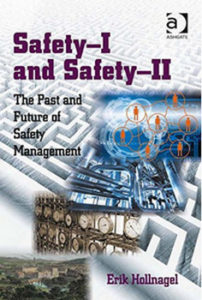 This is the sort of culture that Eric Hollnagel is talking about in his Safety II work, which is intended to move the organization beyond the traditional top-down safety management. (I’ve written about Safety II in previous articles – it is all good!)
This is the sort of culture that Eric Hollnagel is talking about in his Safety II work, which is intended to move the organization beyond the traditional top-down safety management. (I’ve written about Safety II in previous articles – it is all good!)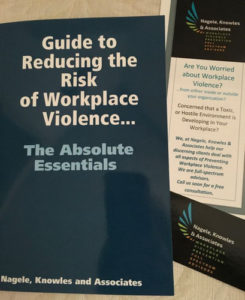
 For example, the workers on the Deepwater Horizon drilling platform received good recognition for outstanding occupational safety performance (the slips, trips and falls sorts of incidents) just a day or two before the explosion on April 20, 2010, that killed 11 people and injured 17 others. The pressures from top management to get into production led to failures of their process safety management (PSM) systems and processes. Communications were limited because management did not want to hear of more problems; they were driving the production schedule. The fine occupational safety performance masked the PSM deficiencies which are more subtle and invisible to upper managers, unless they are keenly aware of the needs for excellent PSM.
For example, the workers on the Deepwater Horizon drilling platform received good recognition for outstanding occupational safety performance (the slips, trips and falls sorts of incidents) just a day or two before the explosion on April 20, 2010, that killed 11 people and injured 17 others. The pressures from top management to get into production led to failures of their process safety management (PSM) systems and processes. Communications were limited because management did not want to hear of more problems; they were driving the production schedule. The fine occupational safety performance masked the PSM deficiencies which are more subtle and invisible to upper managers, unless they are keenly aware of the needs for excellent PSM.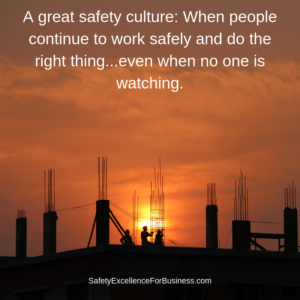 Now we have another example with the mess at Boeing and the 737 Max crashes. Top management was feeling the pressures for market share from Airbus and putting terrific pressures on cost reduction and faster production.
Now we have another example with the mess at Boeing and the 737 Max crashes. Top management was feeling the pressures for market share from Airbus and putting terrific pressures on cost reduction and faster production.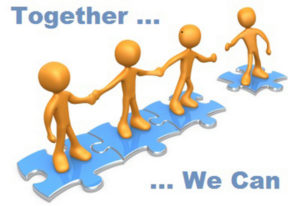 This is quite attainable with authentic, courageous leaders who take a stand that this is the sort of place they want to lead. The knowledge and technology are available and broadly known by lots of people so I want to share my own experiences.
This is quite attainable with authentic, courageous leaders who take a stand that this is the sort of place they want to lead. The knowledge and technology are available and broadly known by lots of people so I want to share my own experiences.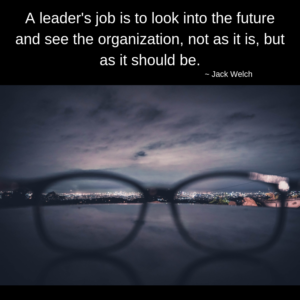 This all began with my determination to work on improving respect, civility and safety. As I built credibility and trust with everyone, people began to make improvements in many other areas. Everything got better.
This all began with my determination to work on improving respect, civility and safety. As I built credibility and trust with everyone, people began to make improvements in many other areas. Everything got better. A review of the Bureau of Labor Statics summary of fatal occupational injuries for 2011-2017 shows a 1% drop in fatalities from 2016 to 2017 to a total of 5,147 people having lost their lives at work. This is about 9% higher than the 4,693 people killed in 2011. The top three 2017 fatalities categories are roadway accidents totaling 1,299 (up 15% since 2011); slips, trips and falls totaling 887 (up 23% since 2011); and murders and suicides totaling 733 (up by only 2% since 2011).
A review of the Bureau of Labor Statics summary of fatal occupational injuries for 2011-2017 shows a 1% drop in fatalities from 2016 to 2017 to a total of 5,147 people having lost their lives at work. This is about 9% higher than the 4,693 people killed in 2011. The top three 2017 fatalities categories are roadway accidents totaling 1,299 (up 15% since 2011); slips, trips and falls totaling 887 (up 23% since 2011); and murders and suicides totaling 733 (up by only 2% since 2011).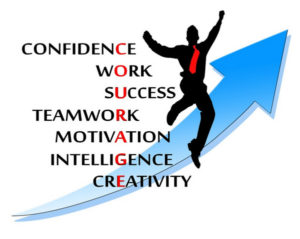 We need courageous leaders who focus on the people, change and the future. Leaders value sharing information, building trust and interdependence, and helping people to see how their job is important for the success of the whole venture.
We need courageous leaders who focus on the people, change and the future. Leaders value sharing information, building trust and interdependence, and helping people to see how their job is important for the success of the whole venture.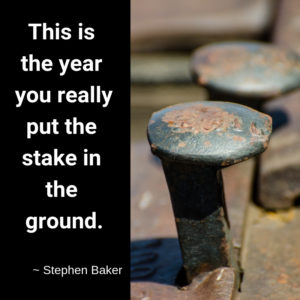 Go into your organizations listening to and talking with the people. Share your vision. Build trust and interdependence. Create safe spaces for people to talk with each other, to share and create the future. Everything will change. That is what I experienced at the Belle Plant.
Go into your organizations listening to and talking with the people. Share your vision. Build trust and interdependence. Create safe spaces for people to talk with each other, to share and create the future. Everything will change. That is what I experienced at the Belle Plant. It is a problem across society in general and a big safety and HR problem in our organizations. In 2017, it is estimated that there were about 72,000 overdoses across the country. About 70% of businesses report that they have been impacted by this terrible problem. The National Safety Council reports that there are problems with poor prescription drug use, higher absenteeism, injuries, and accidents resulting from overdoses.
It is a problem across society in general and a big safety and HR problem in our organizations. In 2017, it is estimated that there were about 72,000 overdoses across the country. About 70% of businesses report that they have been impacted by this terrible problem. The National Safety Council reports that there are problems with poor prescription drug use, higher absenteeism, injuries, and accidents resulting from overdoses.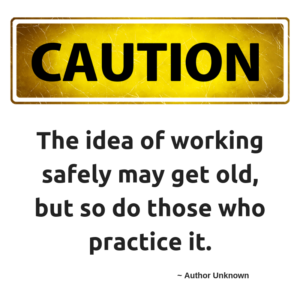 Next, you need to reach out to the people with respect and offer to help them. Many people with drug problems believe no one cares, so reaching out to help would be a step forward.
Next, you need to reach out to the people with respect and offer to help them. Many people with drug problems believe no one cares, so reaching out to help would be a step forward. The patterns at work are also changing as the business activities and demands are changing. There are not enough good, trained people to fill all the openings so the pressure on everyone is going up. Everything at work happens through people so it is critical that we keep everyone engaged in helping to achieve our successes. We need to open up the trust and build interdependence among everyone to keep the information flowing freely. It is clear how important genuine engagement is within our workplaces.
The patterns at work are also changing as the business activities and demands are changing. There are not enough good, trained people to fill all the openings so the pressure on everyone is going up. Everything at work happens through people so it is critical that we keep everyone engaged in helping to achieve our successes. We need to open up the trust and build interdependence among everyone to keep the information flowing freely. It is clear how important genuine engagement is within our workplaces.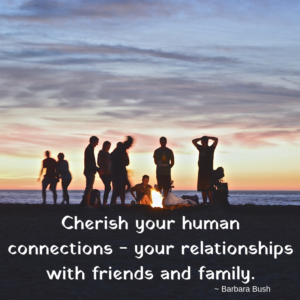 They are totally unconscious that they are an important part of networks at work and at home. Many are the bread winners and if they get hurt or killed, they will cause their loved ones terrible hurt and trouble. The indifference of so many people in supervisory or management positions to this sort of behavior is terrible.
They are totally unconscious that they are an important part of networks at work and at home. Many are the bread winners and if they get hurt or killed, they will cause their loved ones terrible hurt and trouble. The indifference of so many people in supervisory or management positions to this sort of behavior is terrible.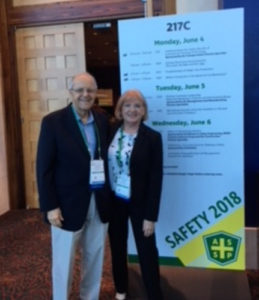 The rapid growth of active shooter incidents was one of the main areas of concern. The FBI and other experts gave talks about this, with their main focus on the active shooter incident itself. Most active shooter situations are conducted by men. Most of these occur in places of business. There is no typical profile for these people who come from all walks of life.
The rapid growth of active shooter incidents was one of the main areas of concern. The FBI and other experts gave talks about this, with their main focus on the active shooter incident itself. Most active shooter situations are conducted by men. Most of these occur in places of business. There is no typical profile for these people who come from all walks of life.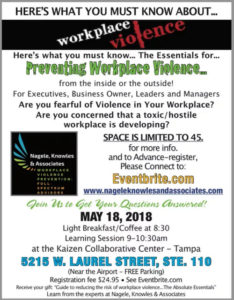
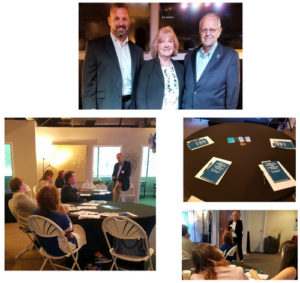
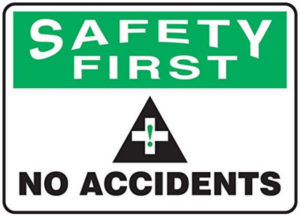 Almost every day I see people post on LinkedIn, engaging in awful safety practices. Some are so ridiculous that they could be funny – except that people are getting hurt. Some workers seem quite content to endanger their lives and co-workers seem to be so unaware of the risks around them – that it is unbelievable!
Almost every day I see people post on LinkedIn, engaging in awful safety practices. Some are so ridiculous that they could be funny – except that people are getting hurt. Some workers seem quite content to endanger their lives and co-workers seem to be so unaware of the risks around them – that it is unbelievable!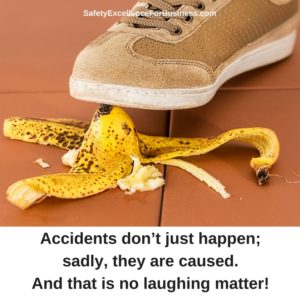 A recent Gallup study conducted over several years, covering about 150 countries, revealed that only about 15% of the people were actively involved in their work and that another 15% were actively opposing their managers and supervisors. The other 70% must be just doing as little as possible and not helping or looking out for each other. We are better in the USA, but not by much.
A recent Gallup study conducted over several years, covering about 150 countries, revealed that only about 15% of the people were actively involved in their work and that another 15% were actively opposing their managers and supervisors. The other 70% must be just doing as little as possible and not helping or looking out for each other. We are better in the USA, but not by much. Recognize Einstein’s Words of Wisdom: “Insanity is doing the same thing over and over again, but expecting different results.“
Recognize Einstein’s Words of Wisdom: “Insanity is doing the same thing over and over again, but expecting different results.“




